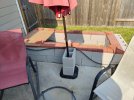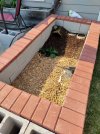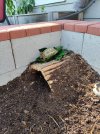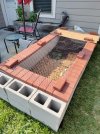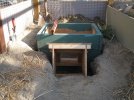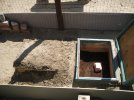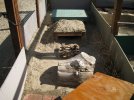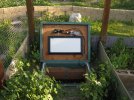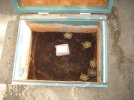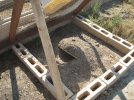QuiKSilvR615
New Member
Hey everyone!
This is my first time posting and I'm very new to all of this, never owned a tortoise before. I'm wanting to setup an outdoor habitat for my little guy and have a few questions! Thank you so much for any feed back and glad to have found this place.
I plan on using cinder blocks (8x8x16") stacked 2 high in a rectangle formation directly on top of my St. Augustine grass in my backyard near my 6' tall fence to provide afternoon deep shade. with a few hides, water soak, feeding dish, etc.
- Do I need to dig those cinder blocks down a bit? Or are they wide enough that my small Russian tortoise wont dig out.
- Do I need to line the bottom of it with a tarp or something before putting down the top soil to prevent fire ants? What do I do if fire ants get in?
- What outdoor heat solutions have you seen for the winter cold nights? Just run an extension cord to a heat lamp?
- In heavy rain do I need to worry about my tortoise drowning?
I also just need ideas if there's a thread I could be pointed to with people posting pics of their outdoor habitats.
Thanks again for any help provided!
This is my first time posting and I'm very new to all of this, never owned a tortoise before. I'm wanting to setup an outdoor habitat for my little guy and have a few questions! Thank you so much for any feed back and glad to have found this place.
I plan on using cinder blocks (8x8x16") stacked 2 high in a rectangle formation directly on top of my St. Augustine grass in my backyard near my 6' tall fence to provide afternoon deep shade. with a few hides, water soak, feeding dish, etc.
- Do I need to dig those cinder blocks down a bit? Or are they wide enough that my small Russian tortoise wont dig out.
- Do I need to line the bottom of it with a tarp or something before putting down the top soil to prevent fire ants? What do I do if fire ants get in?
- What outdoor heat solutions have you seen for the winter cold nights? Just run an extension cord to a heat lamp?
- In heavy rain do I need to worry about my tortoise drowning?
I also just need ideas if there's a thread I could be pointed to with people posting pics of their outdoor habitats.
Thanks again for any help provided!


